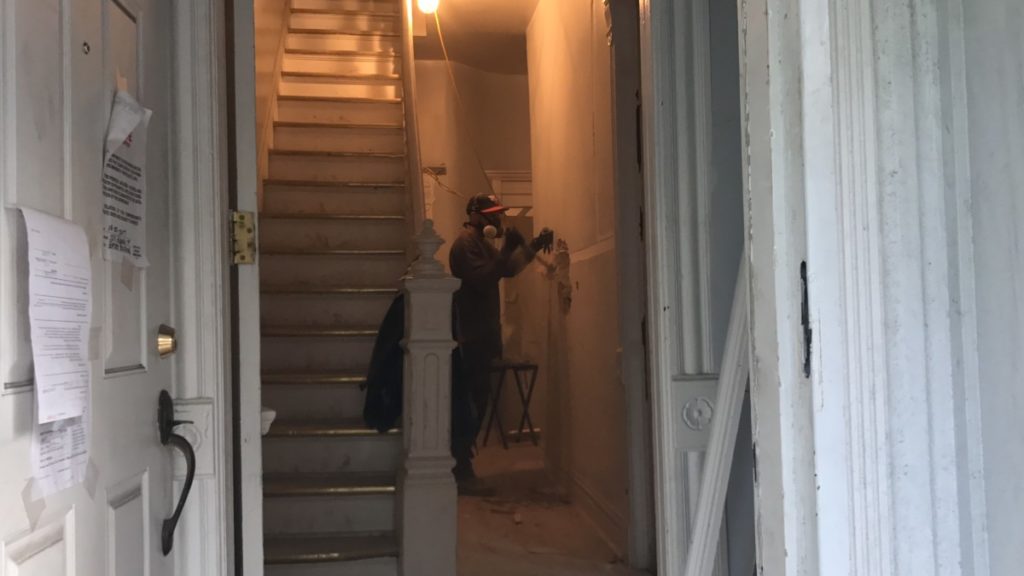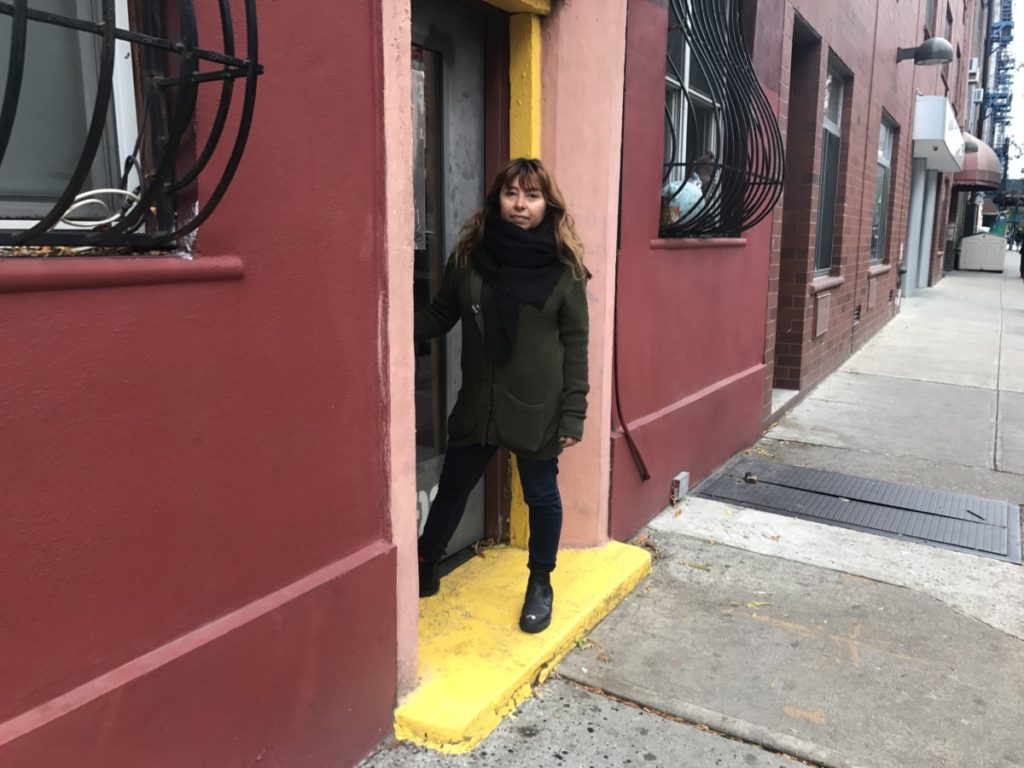In late October, Sam Borenzweig awoke to banging noises outside his Bushwick apartment and a room full of smoke. The smoke had seeped into the crack of his bedroom window from a boarded-up home three doors away, where, he soon learned, firefighters were aggressively battling a three-story house fire. He stepped outside to find flames shooting through the building’s roof, and fire crews knocking down the walls of an adjacent unit to gain access to it.
Borenzweig, 27, recalls a line of fire trucks visible through the smoke on the 1200 block of Halsey Street. “It was all just very surreal,” he said.

One month later, investigators are still working to confirm the official cause of the fire, but initial evidence so far has pointed in one direction: The flames, which the FDNY says injured four firefighters and one civilian, may have been started by squatters who were living in the abandoned home.
In much of New York, the prevalence of squatters has seemed to recede since the 1980s; in Bushwick, both City Council offices say they receive relatively few complaints from neighbors about squatters living nearby. Still, most of the media reports that mention squatters are about suspicious fires. Lost in those narratives is the storied history of a different type of squatter in New York City: the housing activists who emerged in the 1980s and 90s, some of whom now say they are overshadowed and misrepresented in the media.
When she heard the news, Alexandra Rojas’s mind immediately went in two directions: “I right away think, okay, they’re trying to keep warm—and something happened,” she said. “Or, the owner of the building is trying to kick them out. That’s a way to get somebody out—just smoke them out.”

The Brooklyn Ink
Rojas, 40, knows the history of struggle between squatters and landlords more intimately than most. She knows that in 2014, the then-Brooklyn District Attorney, Kenneth Thompson, charged two men with conspiring to burn down a building to remove squatters—a strategy that dates back to the 80s. She knows squatters are often associated with drug houses and thievery. And she also knows, personally, the fear of living in an abandoned building with improvised heat and light sources.
“It’s very difficult if you don’t have a heating system when it gets cold,” she said, “so people do things that are risky.”
Rojas grew up watching the New York City squatter movement from New Jersey, before eventually moving to the Lower East Side and becoming a part of it herself. In the 1980s, squatters began to claim ownership of city-owned abandoned tenement buildings, including some that had fallen into deep disrepair. Motivated by a belief in housing as a public right, and her own need for cheap housing as an artist and painter, Rojas moved into a five-story squat on East 3rd Street in 2000.
Nothing was glamorous about it. “Sometimes we’d run up the spiral stairs, and it felt like your foot was going to go through it,” Rojas recalled. “The apartment had a lot of holes.”
The squatters needed housing, but many of them also advocated for community gardens, recycling, and sustainable living. Some of the squats were well organized. In Rojas’s squat, maintaining the building required an organized team effort that the squatters called “sweat equity.” An electrician friend helped wire the electricity, while Rojas helped chop wood in the backyard for their main heat source—wood-burning stoves—and everyone pitched in with a nominal maintenance fee. No matter how much wood she burned, though, it never seemed quite enough. “In the winter, it was absolutely freezing,” Rojas said. “I remember sleeping under, like, a hundred blankets, and feeling like I was going to suffocate under the weight, and still being cold.”

She and her husband cooked with electric hot plates, bathed in tubs of boiled water, and slept on a mattress propped up by metal crates. Their unit, housed on the top floor, only had one sink, for both kitchen and bathroom use. Although she remembers this as a time of intense struggle roiled with the fear of an accidental fire, Rojas is still proud of the squatters’ fight for housing. “We felt it was really crucial that people deserve a place to live,” she said.
Today, the squatting landscape has changed. In 2002, several squats on the Lower East Side entered into an agreement with the city for a non-profit developer to bring them up to code. Those loans were then transferred onto the squatters, making them collective homeowners. Years later, Rojas and her husband also agreed to bring their squat up to code and became legal homeowners. They still live upstairs, but operate the first floor as a community art gallery, called Bullet Space.
“I miss it. It was so romantic,” Rojas says of her old squatting days. “It was tough, but it was great. Now it’s so…” she pauses, with a look of disappointment, “Regular.”
The political squatter movement fizzled out as more squats became legal, Rojas said. Still, she argues that the public perception of squatters has not changed. Instead, people think “they’re thieves, they’re opportunists, they’re lazy, they’re this and they’re that,” she said. “And maybe some of that is true, but a lot of the time they’re just people just trying to do their thing.”


Leave a Reply